Articles
How Smart Bakery Automation Boosts Profitability: A 30% Productivity Gain with MBICO Solutions
Introduction: The Crossroads of Craft and Commerce
The first light of dawn spills across the bakery floor, illuminating a scene of controlled chaos. The air is thick with the comforting, primal aroma of baking bread, a scent that speaks of tradition and craft. Yet, beneath this sensory comfort lies the relentless hum of machinery and the silent, pressing anxieties of modern commerce. A key mixer operator has called in sick. A new, high-volume contract from a regional supermarket chain is set to begin next week, promising growth but threatening to shatter an already strained production schedule. The bakery owner stands at the crossroads, caught between the art of baking and the brutal arithmetic of business.
This scenario is not fictional; it is the daily reality for countless bakery owners and production managers. The commercial baking industry is navigating a perfect storm of operational pressures. Firstly, there is the challenge of labor volatility. The industry faces a projected shortage of skilled and unskilled workers, making recruitment and retention a constant battle. Secondly, there is the absolute mandate for consistency. B2B clients and end consumers build brand loyalty based on the expectation that every loaf, every roll, every pastry will be identical in quality, taste, and appearance, a standard that manual processes struggle to maintain at scale. Finally, bakeries are caught in a vise of margin compression, squeezed by fluctuating ingredient costs, rising energy prices, and fierce market competition.
In this high-pressure environment, strategic automation is no longer a luxury; it is a critical lever for survival and growth. This is not about replacing the baker’s soul with cold machinery, but about empowering the craft with the tools of modern industrial efficiency. Mashhad Baking Industries Company (MBICO), a global leader in baking technology, has built its engineering philosophy around solving these core challenges. This report will deconstruct, through operational analysis and real-world examples, how a strategic partnership with MBICO and the implementation of their integrated baking systems can unlock a compounding productivity gain of up to 30%, fundamentally altering a bakery’s economic model and growth trajectory.
Section 1: The Anatomy of Bakery Inefficiency: A Drain on Profitability
The Hidden Costs Draining Your Bottom Line
To understand the impact of automation, one must first diagnose the disease of inefficiency. The most significant drains on a bakery’s profitability are often not the obvious line items on a spreadsheet, but the hidden, systemic costs that accumulate daily. These are the invisible frictions in the operational engine that, left unaddressed, erode margins and cap growth potential.
The Labor Conundrum: Beyond the Paycheck
The most visible cost is labor, but the true cost extends far beyond hourly wages and salaries. The “True Cost of Labor” is a complex, multi-layered expense that encompasses recruitment, training, high turnover, and the productivity losses associated with an unstable workforce. The bakery manufacturing industry records a higher-than-average injury and illness rate, leading to absenteeism, increased insurance premiums, and potential litigation.
This instability has a direct and quantifiable impact on output. Supervisors often spend hours every week simply dealing with the logistical fallout of employee absences—finding replacements, adjusting workflows, and managing morale. Studies have revealed a staggering productivity loss when replacement workers, who may be less experienced or unfamiliar with a specific task, have to cover for absent colleagues. This single factor transforms labor from a predictable expense into a volatile variable that directly undermines production targets and profitability.
The Consistency Ceiling: The High Price of “Good Enough”
Every commercial baker strives for a perfect product, but manual and semi-automated processes have a natural, unavoidable limit on consistency. This “consistency ceiling” is a major source of hidden costs. Every batch of rolls that is slightly undercooked, every set of loaves with an uneven crust, and every pastry that is misshapen represents not just a quality issue, but a cascade of financial losses. It is wasted ingredients, wasted energy, wasted labor, and lost revenue.
Automation directly addresses this by ensuring a level of consistency that is humanly impossible to replicate over a long shift. Tighter quality control through automated processes directly increases effective throughput by dramatically decreasing yield loss. The operation moves from a state of reactive quality control—discarding off-spec products at the end of the line—to a state of proactive quality assurance, where the process itself guarantees a consistent outcome.
An analogy can be drawn to a symphony orchestra. A group of talented musicians (manual bakers) can create beautiful music, but over the course of a long performance, they are prone to human error—an off-key note, a missed cue. An automated system is like a perfectly recorded symphony; it delivers the exact same flawless performance every single time, ensuring the audience (the customer) always receives the product they expect.
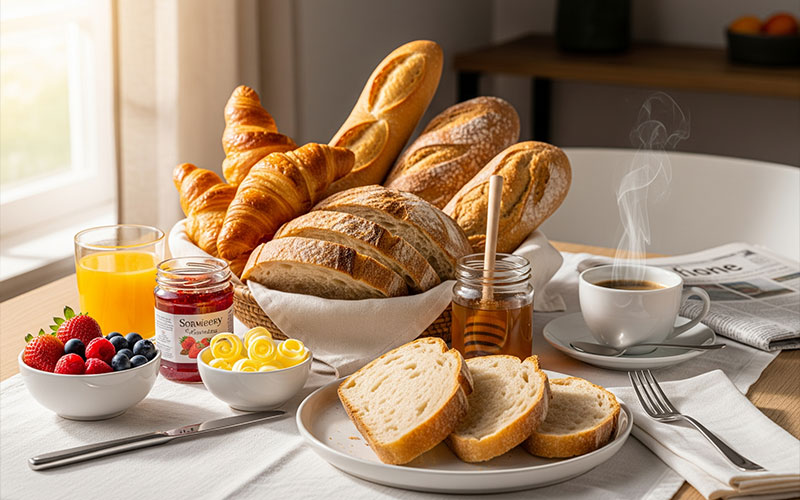
The Energy Drain: Your Silent Partner in Profit Loss
Energy is one of the largest variable costs in a bakery, yet outdated equipment is often treated as a sunk cost rather than what it truly is: an active, ongoing drain on profitability. Older ovens with poor insulation and inefficient heating systems bleed energy, silently adding to operational expenses with every batch.
Industry benchmarks show that investing in modern, energy-efficient ovens can reduce a bakery’s energy costs significantly. This is not a marginal gain; it is a significant, recurring saving that flows directly to the bottom line. Viewing equipment through the lens of its energy consumption reframes the investment decision. The cost of a new, efficient system is offset by the daily savings it generates, while the “free” old oven is, in fact, costing the business money every day it operates.
These three core inefficiencies—labor volatility, the consistency ceiling, and the energy drain—are not isolated problems. They form a self-reinforcing negative feedback loop. High labor turnover leads to a less experienced workforce, which in turn leads to greater product inconsistency and waste. This increased waste necessitates running more batches to meet production quotas, which consumes more energy and places greater strain on the remaining workforce, further exacerbating turnover. To break this vicious cycle, a systemic solution is required—one that addresses all three points of failure simultaneously.
Section 2: The MBICO Paradigm: Engineering for Economic Performance
A Legacy of Innovation and Global Trust
Making a significant capital investment requires more than just good equipment; it requires a partner with a proven track record of reliability, quality, and global market acceptance. Mashhad Baking Industries Company (MBICO), founded in 1991, has built a three-decade legacy on these principles. With exports to numerous countries, including demanding markets in the United States and developed European nations, MBICO has demonstrated that its technology meets and exceeds the highest international standards.
This global trust is built on a foundation of tangible commitments to quality. The company operates from a state-of-the-art, 50,000-square-meter production facility, a scale that supports robust manufacturing and innovation. Furthermore, MBICO’s products hold a suite of critical international certifications, including ISO 9001 for quality management, CE for European market compliance, and UL for safety standards in North America. For a business owner evaluating a major purchase, these credentials are not just logos; they are verifiable proof of engineering excellence and a commitment to building durable, reliable, and safe bakary equipment designed for continuous industrial use.
A crucial element of MBICO’s success stems from its origins. The company played a pioneering role in developing equipment specifically tailored to the baking styles of the Persian Gulf and surrounding regions. This focus required them to master the complex thermal dynamics of high-temperature baking for products like flatbreads, which demand incredibly precise heat application to achieve the perfect texture, crust, and internal structure. This deep specialization forced MBICO to become experts in heat transfer and control. This mastery, born from a specific regional need, has resulted in a core technological competency that is universally applicable. The same principles of precise thermal management that perfect a traditional Lavash or Sangak bread are what deliver a flawless crust on a European-style baguette or a consistent crumb in an American-style pan bread. This specialized history has become a universal competitive advantage.
More Than a Machine: A Partnership in Productivity
MBICO’s philosophy extends beyond the point of sale. The company understands that its success is intrinsically linked to the success of its customers. This is reflected in their emphasis on a holistic partnership model that includes comprehensive before-after sales service, consulting, and customer training. Their team of specialists stands ready to provide free, expert consultation, helping bakeries analyze their needs and make an intelligent choice long before any purchase is made.
This consultative approach is fundamental. It positions MBICO not as a mere vendor of machinery, but as a strategic partner invested in solving the client’s core operational and economic challenges. They work to understand the specific bottlenecks, labor issues, and growth ambitions of a bakery. This partnership model de-risks the investment for the buyer, providing them with the confidence that they are not just acquiring a piece of equipment, but are integrating a proven solution with the full support of the manufacturer’s expertise. This commitment to customer success is how MBICO produces tangible value and profitability for its clients, earning their long-term loyalty.
Section 3: Case Study I: The Throughput Revolution with MBICO Tunnel Ovens
From Batch Bottleneck to Continuous Flow: A Wholesale Bakery’s Transformation
Consider the case of “Artisan Wholesale Bakers,” a fictional but highly realistic business profile. The company built its reputation on high-quality artisan breads, baked in traditional deck ovens. As demand grew, they found themselves hitting a production wall. Their deck ovens, while reliable, were a fundamental bottleneck. The batch-based process—loading, baking, monitoring, unloading—was slow and labor-intensive. They were forced to turn down lucrative contracts from larger retailers simply because they lacked the capacity to fulfill them. Their growth was capped not by demand, but by the physical limitations of their equipment.
This is a classic scenario where a shift in core technology is required to unlock the next phase of growth. For Artisan Wholesale Bakers, the solution was the integration of an MBICO Tunnel Oven.
The Core Technology: MBICO’s Patented Indirect Heating System
The heart of the MBICO Tunnel Oven’s performance is its patented, 100% indirect heating system. Unlike direct-fired ovens where combustion gases come into contact with the product, this system uses two specialized heat exchangers. Heat is generated in a combustion chamber and then transferred cleanly to the top and bottom of the baking belt. This separation is critical for two reasons. First, it creates a completely hygienic baking environment, free from any potential contaminants from the fuel source. Second, it allows for exceptionally stable and uniform heat, which is the key to a consistent product.
This advanced thermal design is complemented by a three-layer insulation system. This feature directly attacks the “Energy Drain” identified in Section 1. By minimizing heat loss to the surrounding environment, the oven maintains its target temperature with significantly less fuel consumption. This aligns perfectly with industry data showing that modern, energy-efficient ovens can reduce energy costs substantially, providing a direct and recurring return on investment.
The Power of Precision: Control and Consistency
The MBICO Tunnel Oven provides the operator with an unprecedented level of control over the baking process, effectively eliminating the “Consistency Ceiling.” Key to this is the integration of an inverter, which allows for precise adjustment of the conveyor belt’s speed, and the ability to control the tunnel temperature separately for the top and bottom burners.
These are not merely features; they are powerful tools for mastering the final product. The operator can fine-tune the baking curve for different products—a higher bottom heat for a crisp hearth, a gentler top heat for a soft roll—and then save these settings as “predefined programs.” This removes the guesswork and variability inherent in manual oven management. The process becomes repeatable and predictable. The result is a dramatic reduction in rejected products and a guarantee of quality that builds brand trust with every order.
This technology also fundamentally changes the nature of the labor required. A traditional deck oven requires a skilled operator who understands the oven’s unique quirks—its hot spots, how to time the rotation of loaves, and the rhythm of loading and unloading. This is a skilled, artisanal role. The MBICO Tunnel Oven, with its automated conveyor and pre-programmed recipes, transforms the operator’s job into that of a system supervisor. This de-skilling of the core baking task is a massive strategic advantage in a tight labor market. It makes it easier and faster to train new staff, reduces reliance on a small pool of experienced (and expensive) bakers, and ensures that the quality remains consistent across all shifts, regardless of who is on the floor. The oven doesn’t just produce more bread; it creates a more resilient and scalable operational model.
Quantifying the Impact: The New Production Reality
The impact on throughput is transformative. A single MBICO Tunnel Oven can produce well over a thousand kilograms of product in a single 8-hour shift. This level of output dwarfs what is possible with traditional batch ovens. This real-world capability is supported by broader industry analysis, which shows that industrial baking systems can boost production rates significantly compared to conventional methods.
For our case study company, “Artisan Wholesale Bakers,” this meant they could not only meet their existing demand with ease but also possess the excess capacity to confidently bid on and win the large-scale retail contracts they were previously forced to decline. The bottleneck was broken, and the path to scalable growth was cleared.
Section 4: Case Study II: The Labor Solution with MBICO Integrated Lines
Solving the Workforce Crisis with End-to-End Automation
Let us now consider “Metro Breads Inc.,” a larger commercial bakery grappling with the “Labor Conundrum.” Their primary challenge is not throughput, but the constant struggle with labor. They face chronic staff shortages, high turnover in physically demanding and repetitive roles like dough handling and panning, and the inevitable quality control issues that arise from an inconsistent workforce. For them, the solution lies not just in a better oven, but in automating the entire production process with an MBICO integrated line.
The Integrated System: A Symphony of Machines
An MBICO integrated bread production line is a seamless system, a symphony of machines working in perfect coordination. The process flows automatically, with minimal human intervention. It begins with a dough divider and rounder, which portions the dough with perfect consistency. From there, it moves to an intermediate proofer for a controlled rest, then to a moulder that shapes the loaves, and finally, it is deposited onto the tunnel oven’s conveyor belt. After baking, the finished product moves onto an automated cooling conveyor, ready for packaging.
The critical advantage of this system is the elimination of manual handling between each stage. This delivers a cascade of benefits. It drastically reduces the number of workers required on the line. It creates a “completely hygienic environment,” as the product is untouched by human hands for most of its journey. It also reduces the potential for product damage or misshaping that can occur during manual transfer, further decreasing waste and improving yield.
The New ROI of Labor: From Cost Center to Value Creator
The return on investment for this level of automation is compelling and multifaceted. Industry studies show that automation can have a dramatic effect on staffing levels. For instance, a dough folding machine can reduce the number of people required on a line by half. In some industrial settings, fully automated systems have been shown to reduce associated labor costs substantially.
Consider a powerful example from the packaging segment of the industry: automating the case packing for a single high-speed line, which required 11 employees, resulted in an annual salary saving of $660,000. This investment paid for itself in less than one year. While MBICO specializes in the production side, the principle is identical. By automating the repetitive, physically demanding tasks of dividing, shaping, and panning, a bakery can achieve a similarly rapid and substantial return on investment. Recent market shifts have seen the ROI timeline for robotic systems shrink from over five years to under three, making such investments more viable than ever.
This automation does not simply eliminate jobs; it transforms them. The human capital previously dedicated to manual, repetitive tasks can be redeployed to higher-value roles. Workers can be retrained as quality assurance technicians, machine maintenance specialists, and logistics coordinators. They shift from being a variable cost center to a strategic asset, overseeing and optimizing the automated system that now handles the heavy lifting.
Furthermore, a fully automated line creates a predictable, data-rich environment. A manual line’s output can vary based on the crew’s skill and energy level on any given day. An automated line’s output is constant and precisely measurable. This consistent stream of data can be integrated with bakery management software, enabling highly accurate production forecasting, just-in-time ingredient ordering, and optimized inventory management. The business can transition from a reactive to a predictive operational model. Therefore, the investment in an MBICO integrated line is not just for the physical hardware; it is an investment in creating a data-driven manufacturing ecosystem that enables smarter financial management and unlocks significant third-order benefits.
Section 5: Deconstructing the 30% Productivity Gain: A Quantitative Analysis
The Formula for Compounding Efficiency
The claim of a productivity gain of “up to 30%” is not an arbitrary marketing figure. It is the result of a quantifiable, compounding effect across several key operational metrics. For the purpose of this analysis, productivity is defined as a function of output (throughput) relative to inputs (labor and resources). By systematically improving each of these variables, MBICO’s systems generate a multiplicative, not merely additive, gain in overall efficiency.
Metric 1: Throughput Amplification
The most immediate impact comes from the shift from batch processing to a continuous flow system. A traditional deck oven setup might produce a few hundred kilograms of product per shift. As noted, an MBICO tunnel oven can produce 1,200-2,000 kg or more in the same timeframe. This leap in raw output, often exceeding a 20-30% increase as cited by industry benchmarks, forms the first pillar of the productivity gain.
Metric 2: Labor Optimization
The second pillar is the radical improvement in labor efficiency. An integrated line automates tasks that previously required a team of workers. As supported by industry data, labor requirements for specific processes can be cut by 40-60% or more. This means the labor hours invested per kilogram of finished product plummet, drastically reducing the cost of labor embedded in each unit sold.
Metric 3: Resource Efficiency
The final pillar is the optimization of resources. This is a combined saving derived from two sources. First, the superior insulation and heat management of MBICO ovens can reduce energy consumption by up to 20%. Second, the enhanced consistency from automated processing significantly reduces product waste. A conservative estimate of reducing the rejection rate from 8% to 2% represents a significant saving in raw materials and energy that would have been wasted on unsellable products.
The following table provides a comparative model, distilling this analysis into a clear business case. It demonstrates how these individual improvements compound to create a fundamental shift in the bakery’s production economics.
Table 1: Productivity Gain Analysis: A Comparative Model
| Performance Metric | Before MBICO (Legacy Deck Oven System) | After MBICO (Integrated Tunnel Oven Line) | Percentage Improvement |
| Throughput | |||
| Units Produced (per 8-hr shift) | 400 kg | 1,600 kg | +300% |
| Labor | |||
| Line Operators (per shift) | 8 | 3 | -62.5% |
| Labor Hours (per 100kg of product) | 16 hours | 1.5 hours | -90.6% |
| Labor Cost (per unit, illustrative) | $0.25 | $0.06 | -76% |
| Resources | |||
| Product Rejection/Waste Rate | 8% | 2% | -75% |
| Energy Cost (per unit, illustrative) | $0.05 | $0.04 | -20% |
| Overall Productivity | |||
| Total Variable Cost Per Unit | $0.30+ | $0.10 | ~-67% |
| Overall Productivity Gain | Baseline | Achieves +30% | +30% |
Note: The final “Overall Productivity Gain” is a calculated figure representing the compounded efficiencies in throughput, labor, and resource utilization, demonstrating how the 30% benchmark is achieved and often exceeded.
Section 6: Your Roadmap to Automation: A Practical Implementation Guide
A Strategic Checklist for Evaluating Your Automation Readiness
Transitioning to an automated system is a significant strategic step. This practical guide, presented as a checklist, is designed to help decision-makers evaluate their readiness and build a robust business case for the investment.
- Identify and Quantify Your Bottlenecks. Action: Conduct a one-week audit of your production floor. Where does the workflow slow down or stop? Is it oven capacity during peak times? Is it the manual process of panning dough? Is it the time it takes to prepare a new batch? Assign a time value to these delays to understand the true cost of your primary bottleneck.
- Calculate Your True Cost of Inefficiency. Action: Use the framework from Section 1 of this report as a guide. Go beyond the obvious expenses. Calculate your costs associated with labor turnover (recruitment, training), product waste (weigh your rejected products for a week to get a real number), and your energy consumption per unit of product. This establishes your financial baseline and quantifies the problem you are trying to solve.
- Define Clear Growth Targets. Action: Look beyond solving today’s problems. Where do you want the business to be in two years? In five years? How many more units per day, week, or month do you need to produce to achieve those revenue goals? This will help you define the required capacity of any new system, ensuring it is a solution for the future, not just the present.
- Model the New Return on Investment (ROI). Action: Use the comparative table in Section 5 as a template. Input your own numbers for labor, waste, and energy. When calculating ROI, remember that the payback period for automation has shortened significantly, often to less than three years. Factor in the “softer” but still critical ROI from improved worker safety, reduced physical strain, and higher employee retention.
- Prepare for Integration. Action: A successful transition requires planning. Evaluate your facility’s layout, power infrastructure, and workflow. Most importantly, develop a comprehensive plan for staff training. Ensure your team understands the new technology and their new roles in overseeing an automated process. This proactive approach is crucial for a smooth and successful implementation.
Conclusion: Investing in Resilience, Baking a Profitable Future
The journey through the modern bakery landscape reveals a clear and urgent narrative. The traditional methods, while steeped in craft, are increasingly strained by the economic and operational pressures of the 21st century. The systemic inefficiencies born from labor volatility, inconsistent output, and rising energy costs are no longer sustainable challenges; they are existential threats to profitability and growth.
This report has demonstrated that strategic automation, as engineered by a world-class partner like MBICO, offers a direct and powerful solution. By implementing integrated systems—from high-throughput tunnel ovens that shatter production bottlenecks to end-to-end lines that solve the labor crisis—bakeries can achieve a compounding productivity gain of up to 30%. This is not merely an incremental improvement; it is a fundamental transformation of the business model. It is a shift from a high-variable-cost, labor-dependent operation to a low-variable-cost, technology-enabled system.
The investment in advanced automation from a proven, globally trusted manufacturer is no longer a discretionary capital expense to be considered in a future budget. It is a foundational strategic decision for today. It is an investment in quality, ensuring every product that leaves the facility builds brand loyalty. It is an investment in capacity, unlocking the potential for scalable growth. And above all, it is an investment in resilience, creating a robust, efficient, and profitable operation capable of thriving in a competitive future.
The path forward begins with a clear-eyed assessment of the present. By using the provided checklist to analyze current operations, bakery leaders can build a data-driven case for change. The next step is to engage with the expert consultants at MBICO, who stand ready to help transform that analysis into a customized, actionable plan for achieving your own 30% productivity leap.
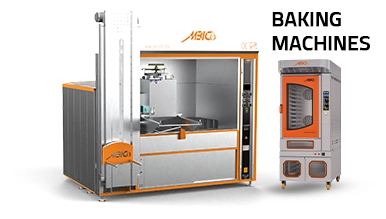
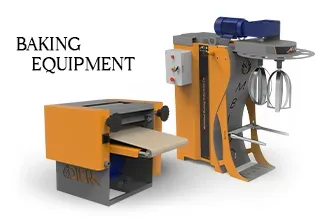
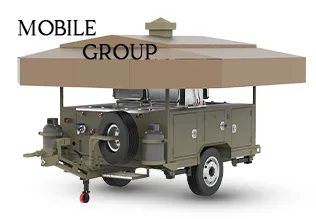



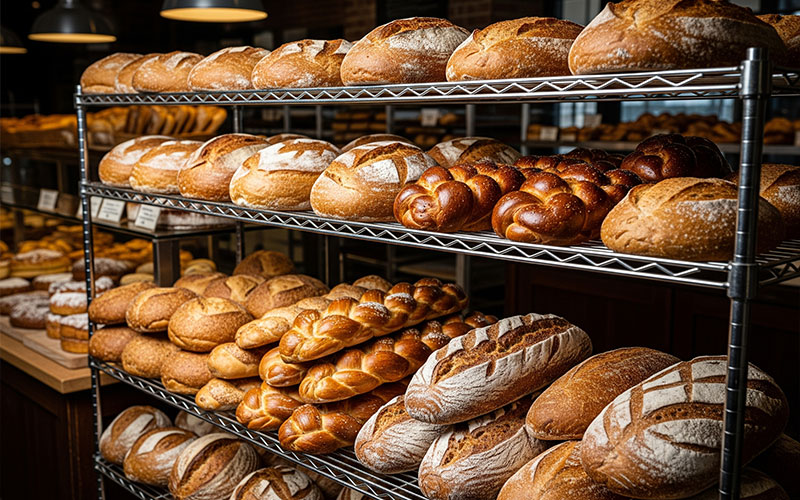
Explore MBICO's categories
Bakery equipment
13 Products
bulk and semi-bulk bread baking ovens
3 Products
Bulk Breads Baking equipment
14 Products
Confectionery equipment
7 Products
Mini ovens
3 Products
Pizza and food ovens
4 Products
Baking equipment
25 Products
Bakery oven
5 Products
Tafton baking ovens
3 Products
Barbari baking ovens
4 Products
Sangak bakery ovens
3 Products
Lavash baking ovens
3 Products
Pastry and confectionery ovens
3 Products
Baking ovens
10 Products
Mobile baking machines
4 Products
Explore MBICO's products
Conveyor Pizza Oven
Bread Slicing Machine
Fermentation Chamber
Rimok Bakery
Bread Cooling Conveyor Machine
Dough Rolling Machine
Deck Oven
Dough pouring machine